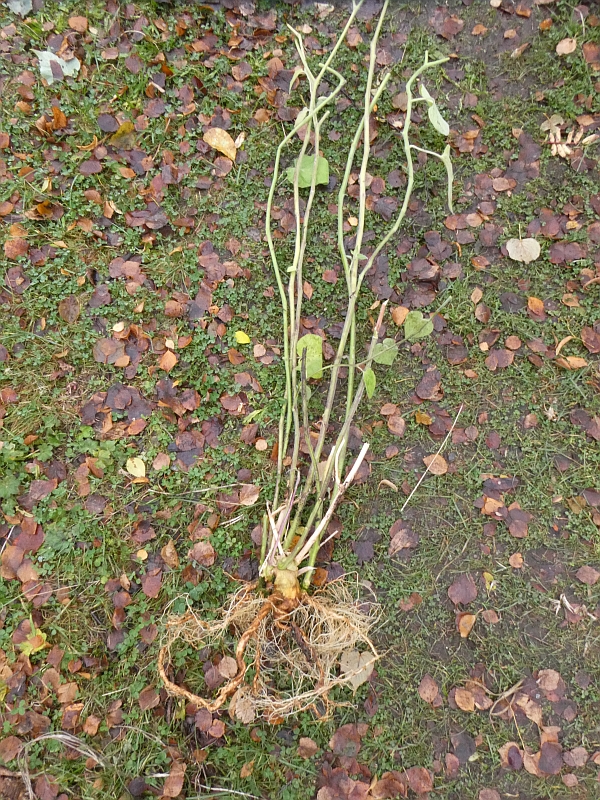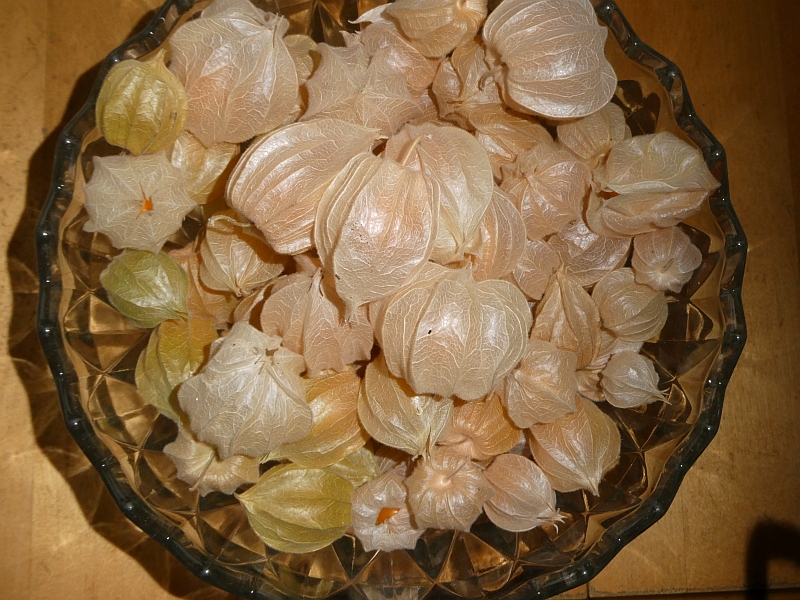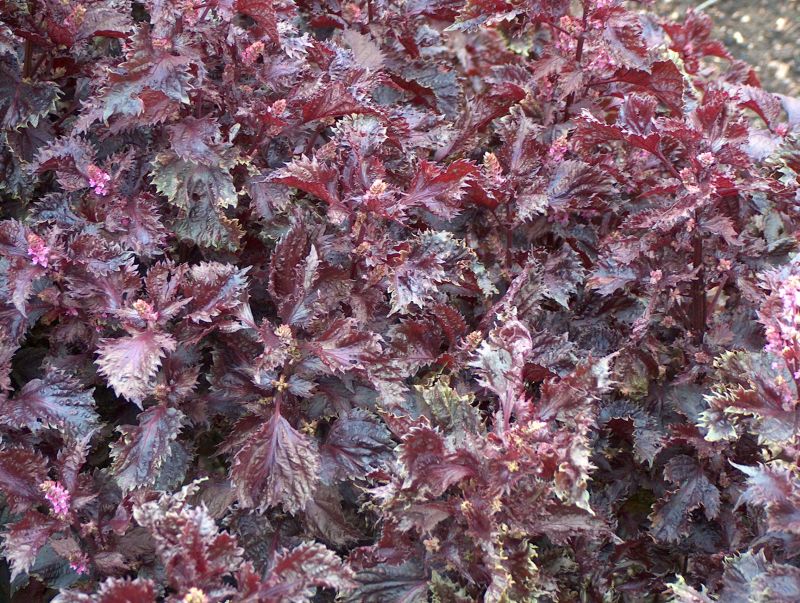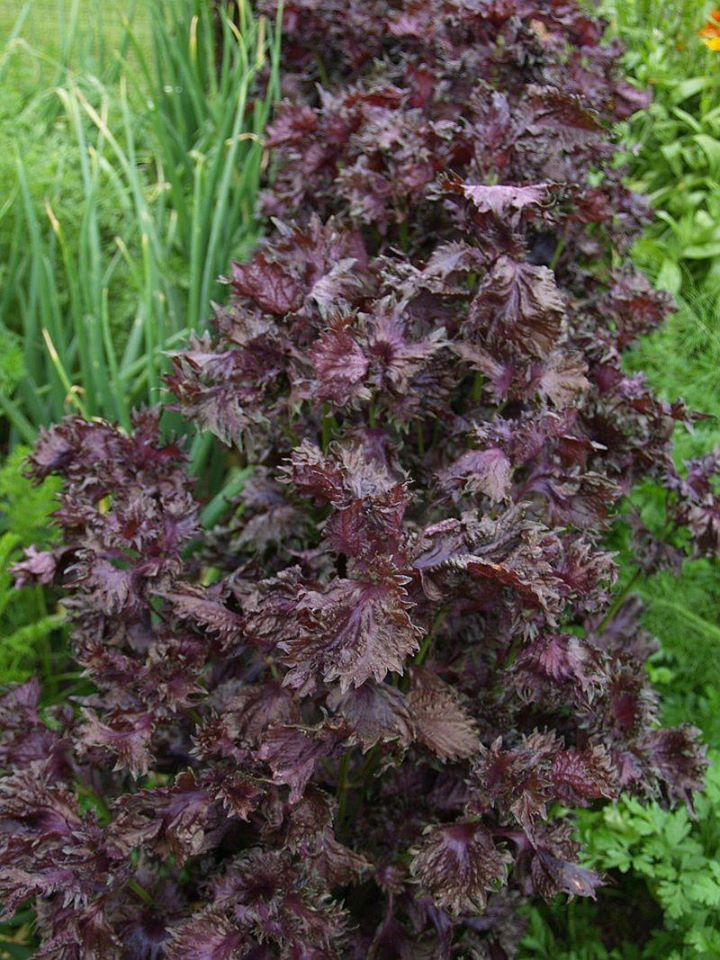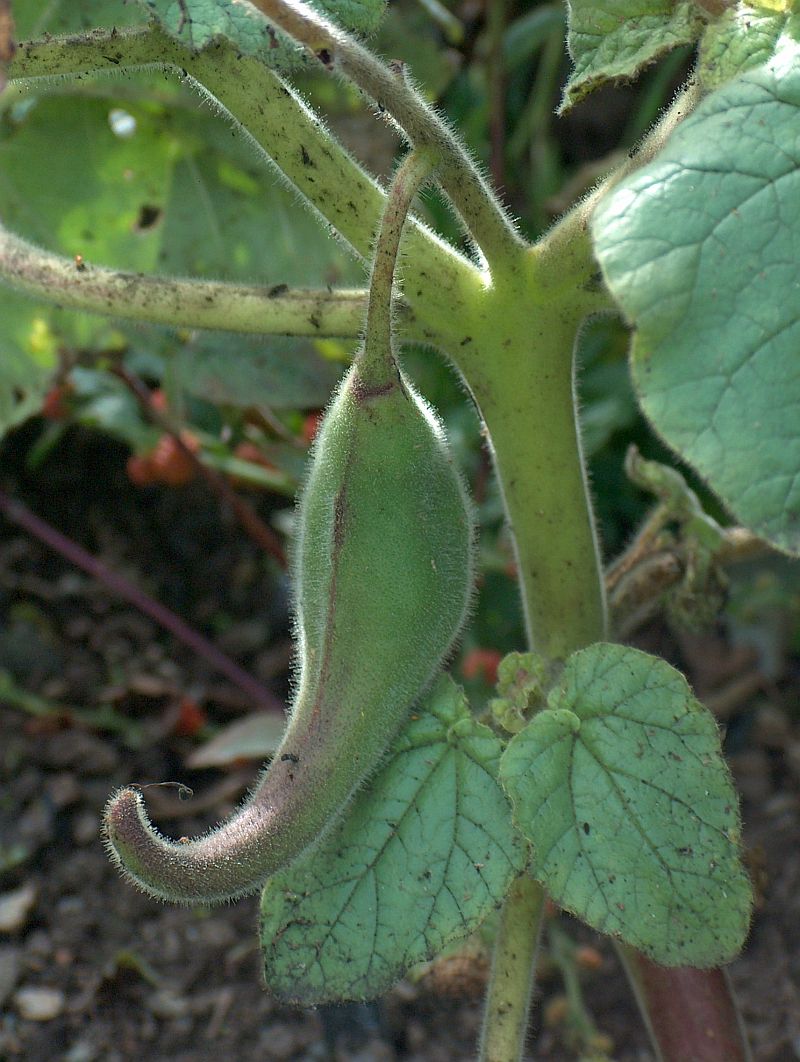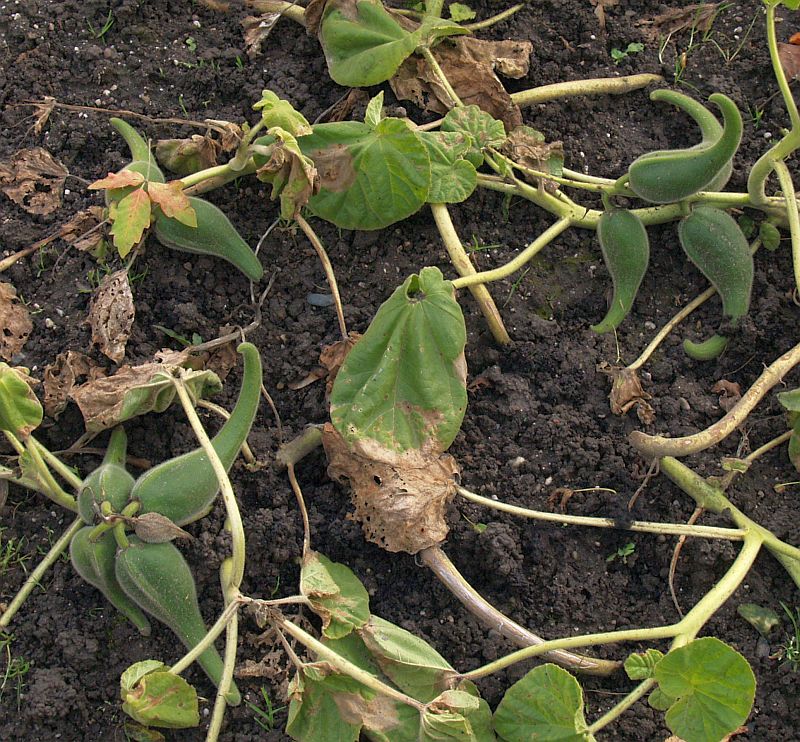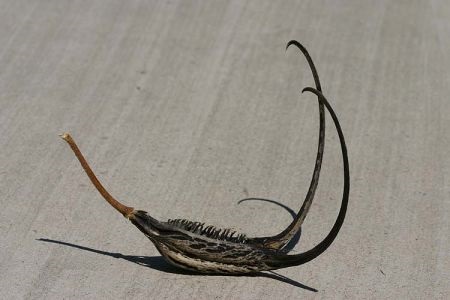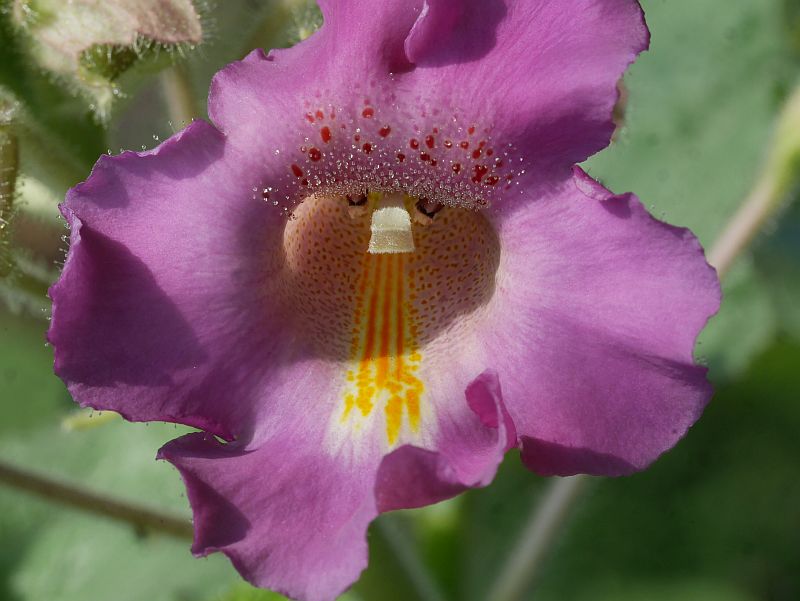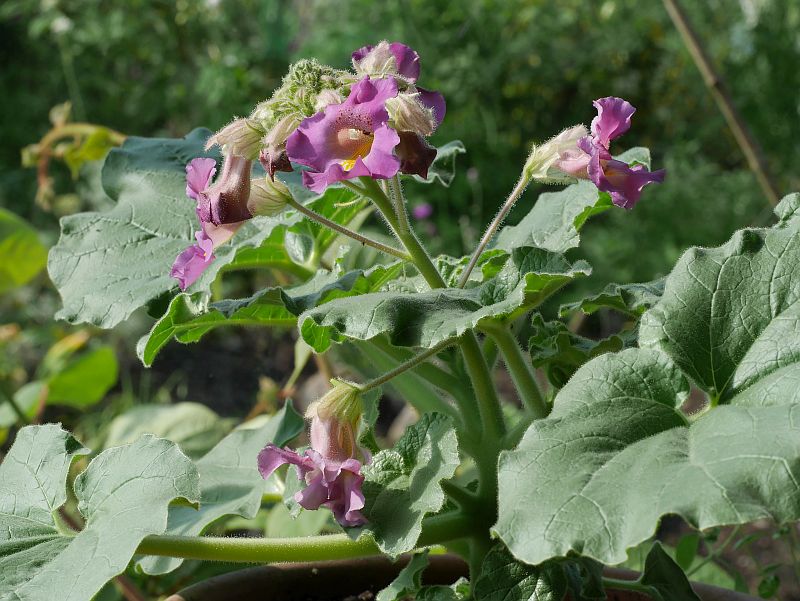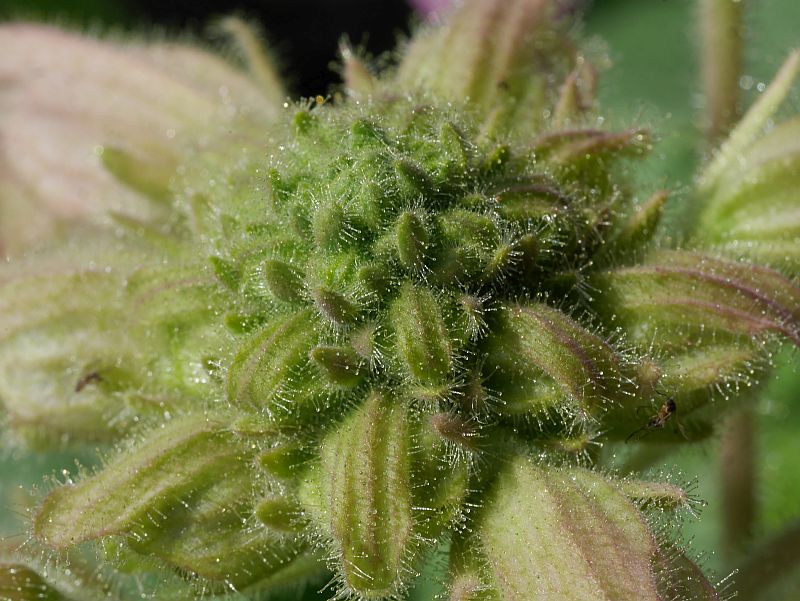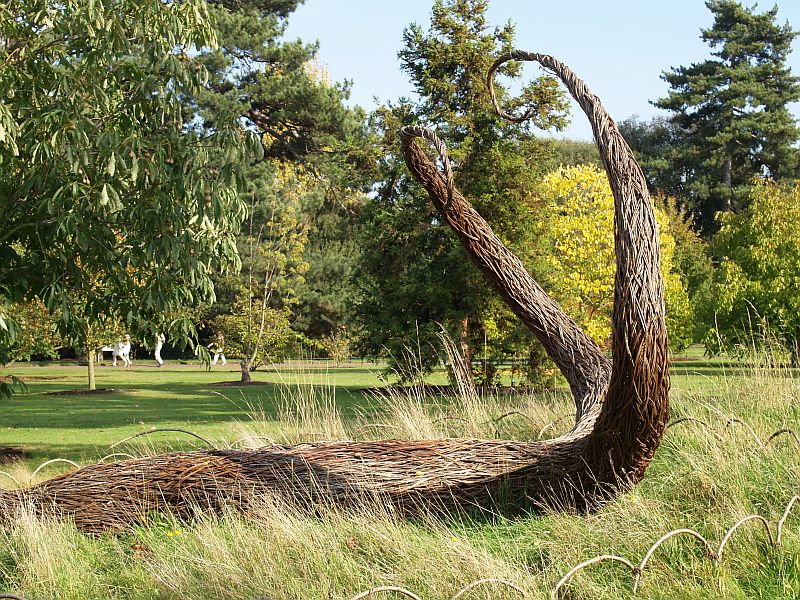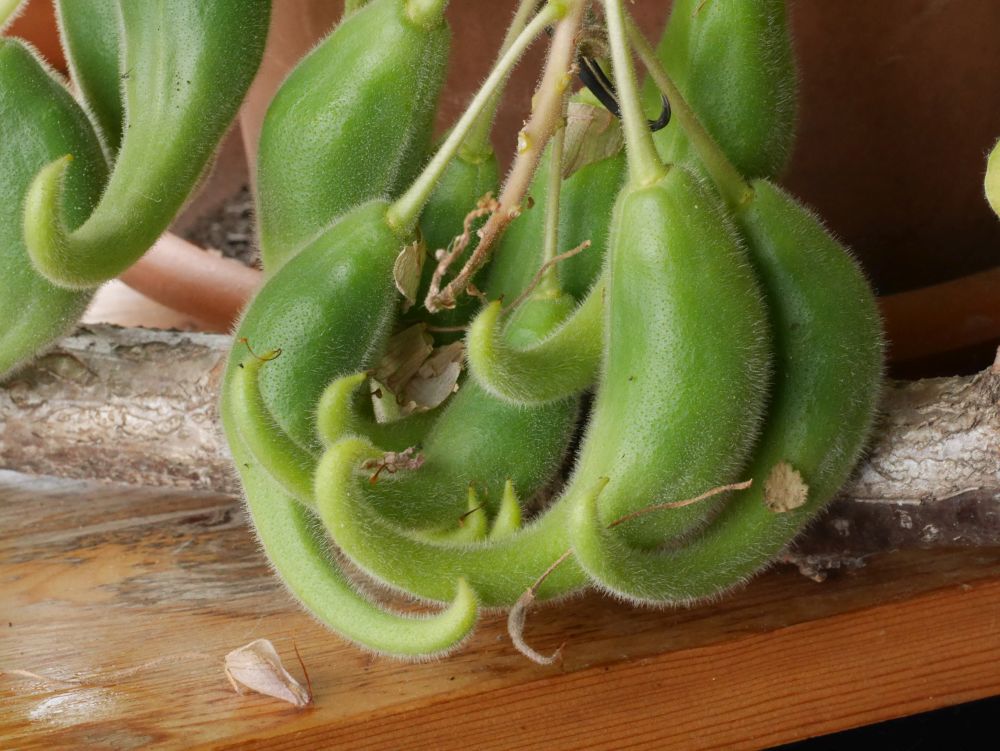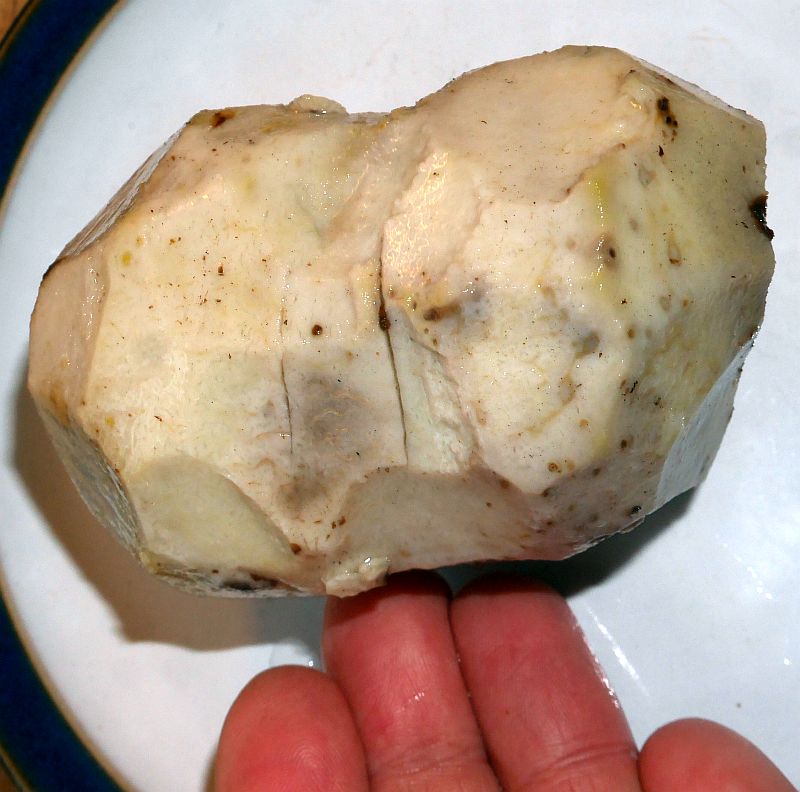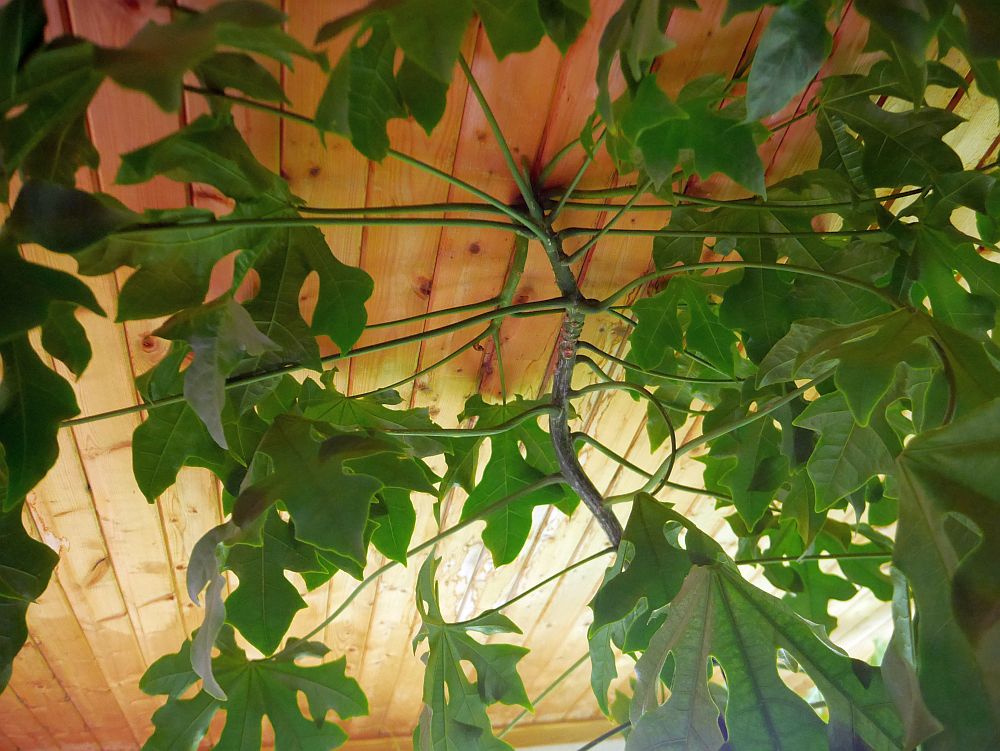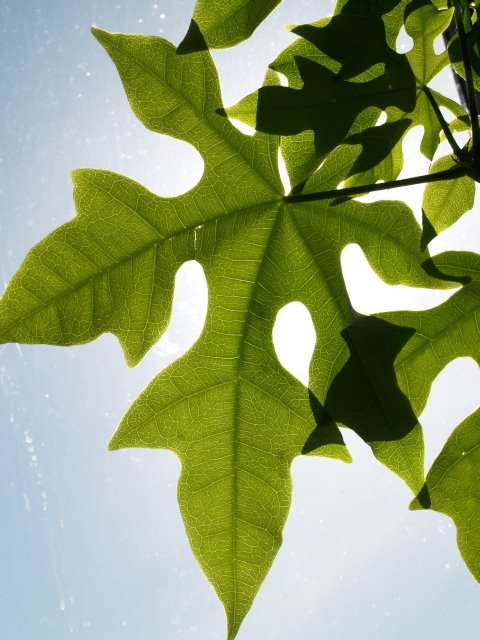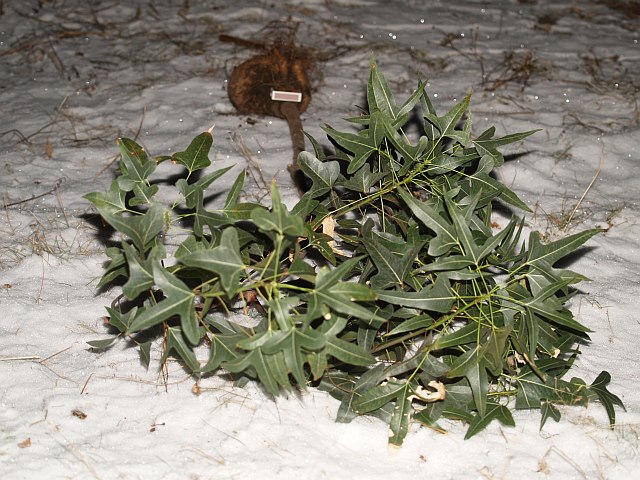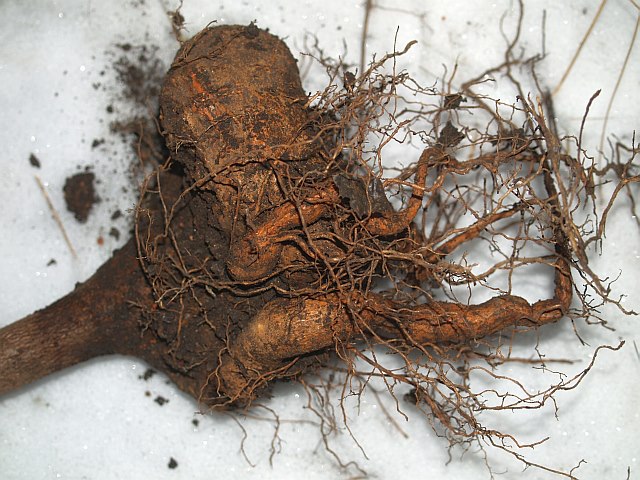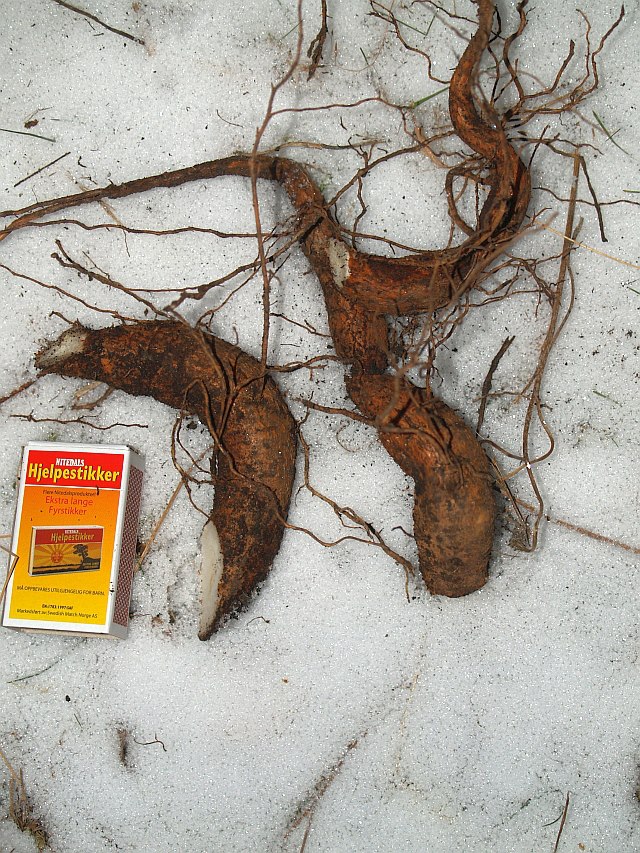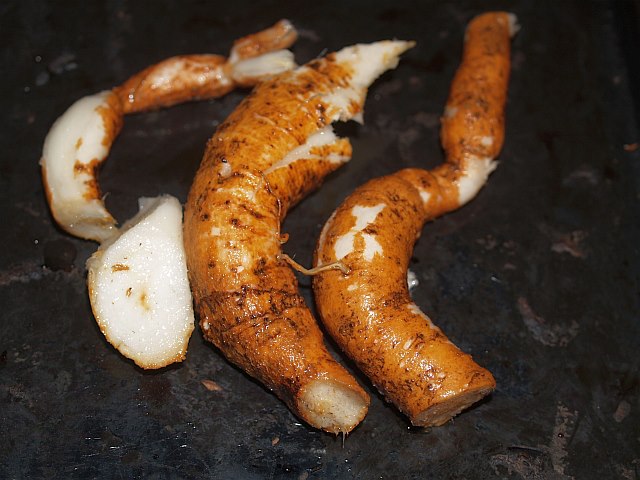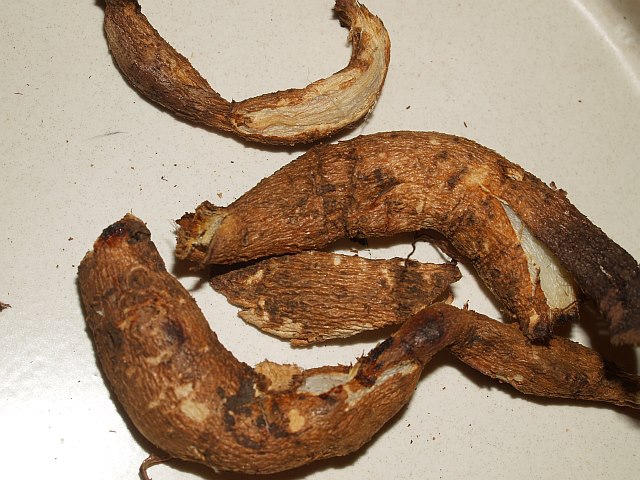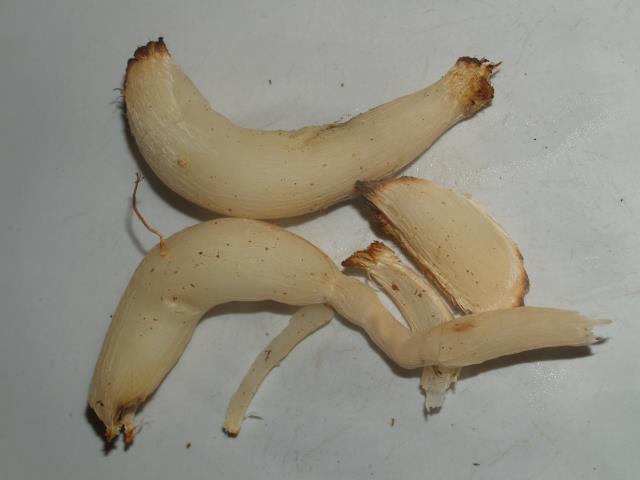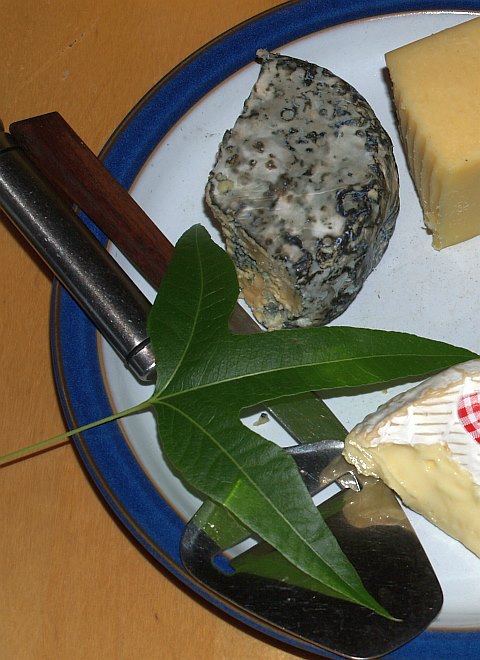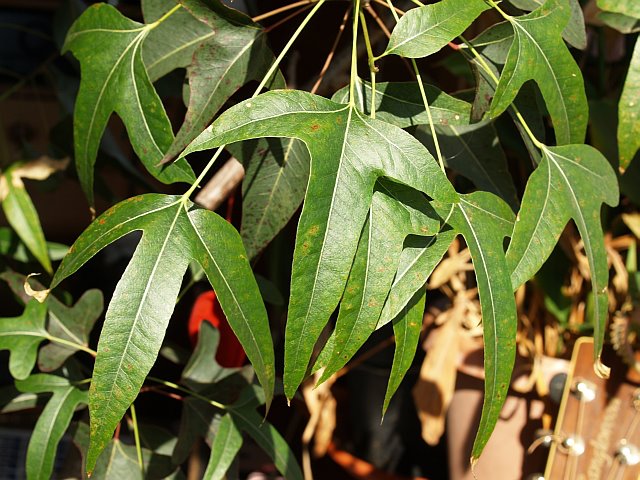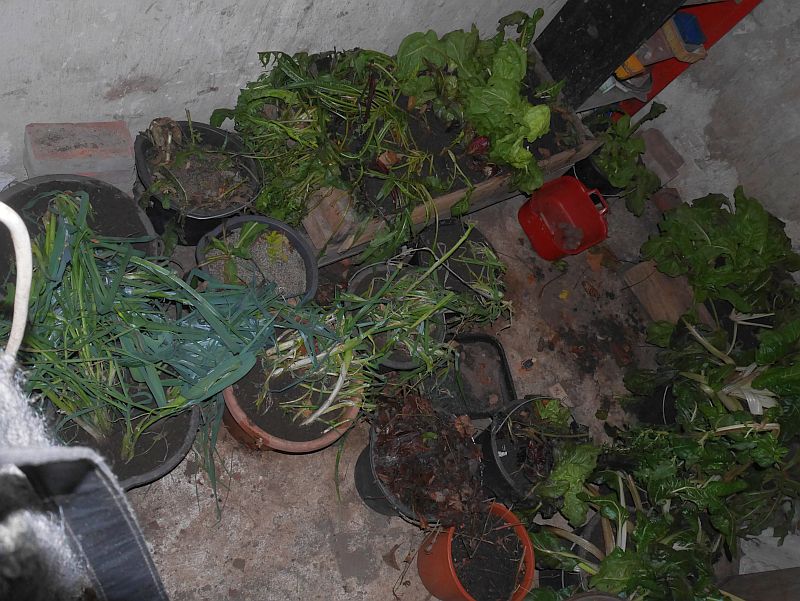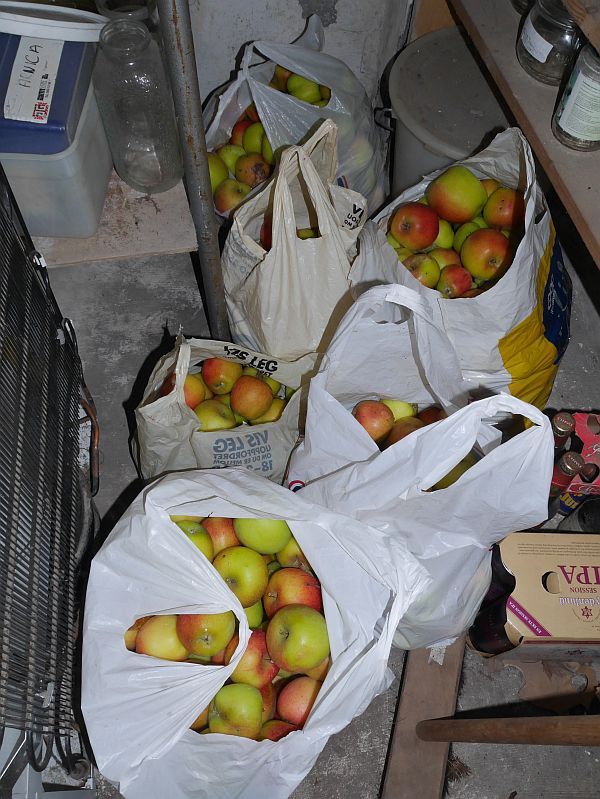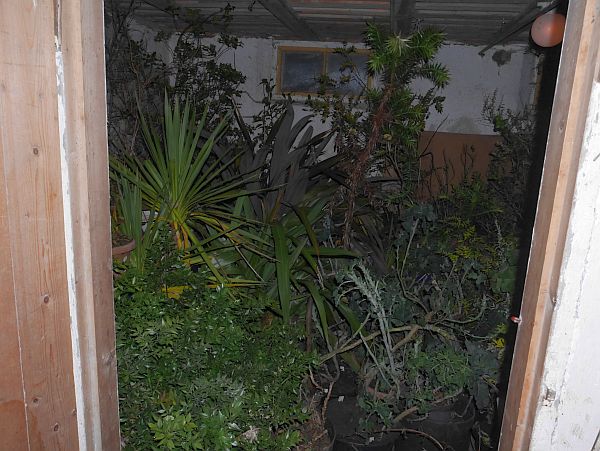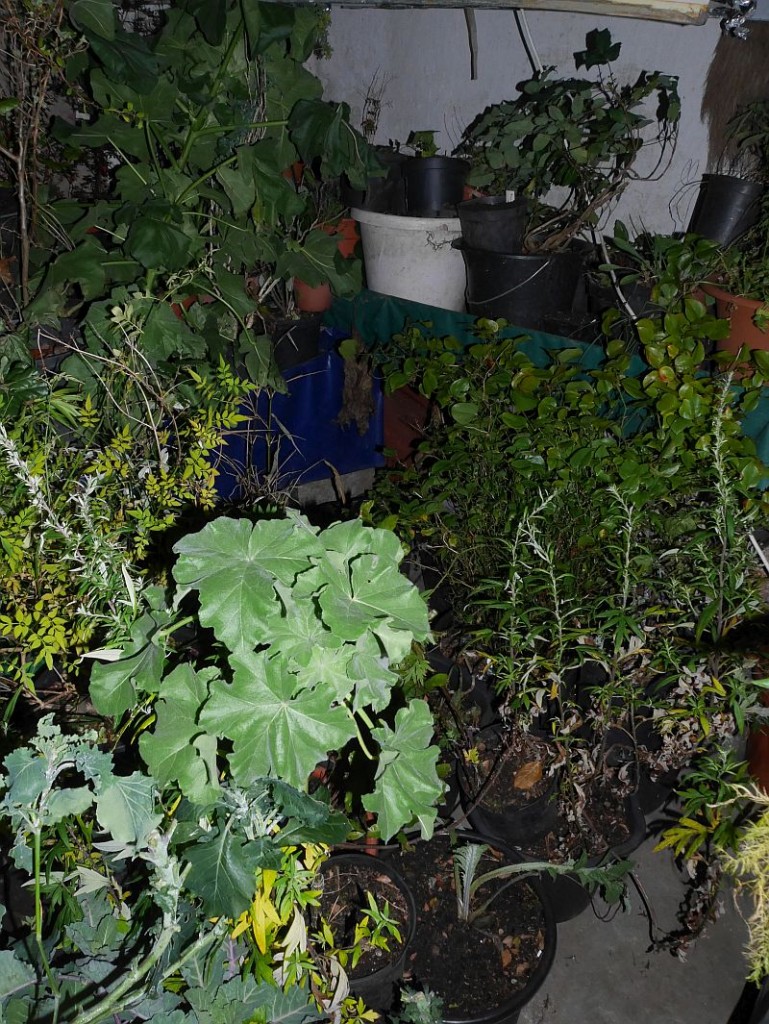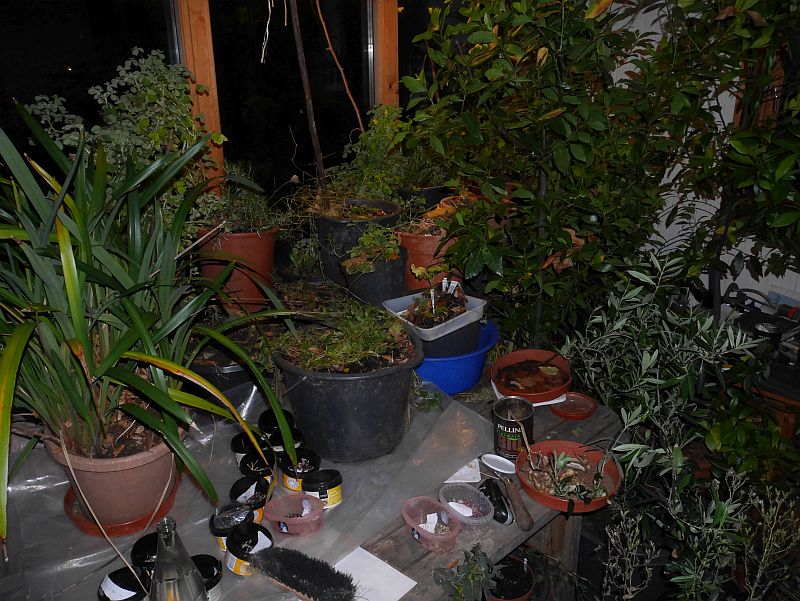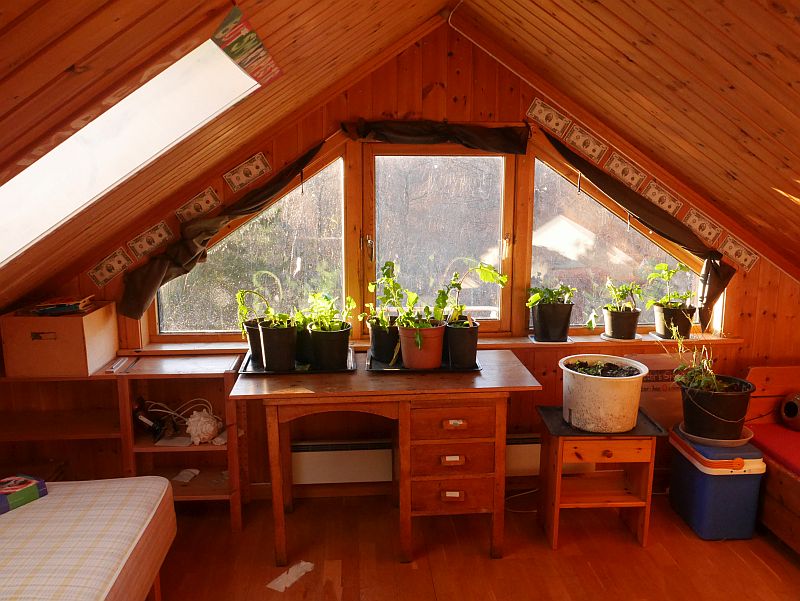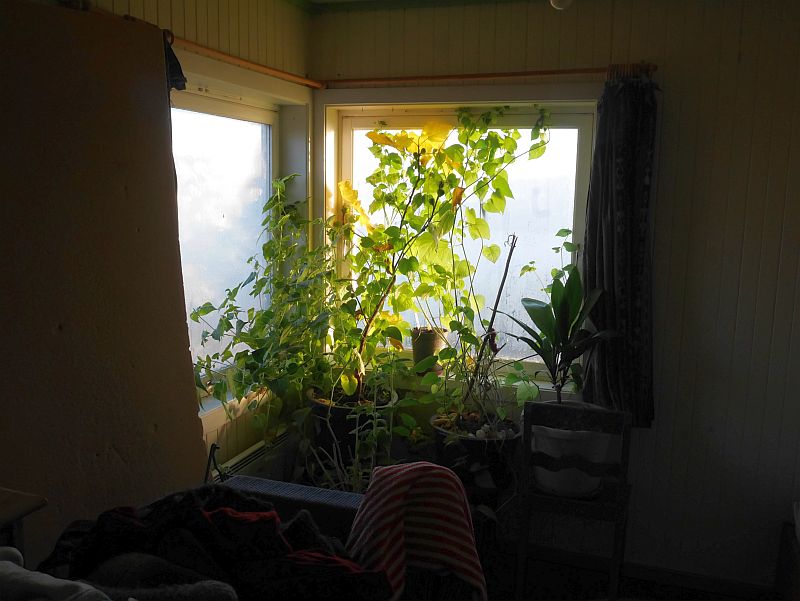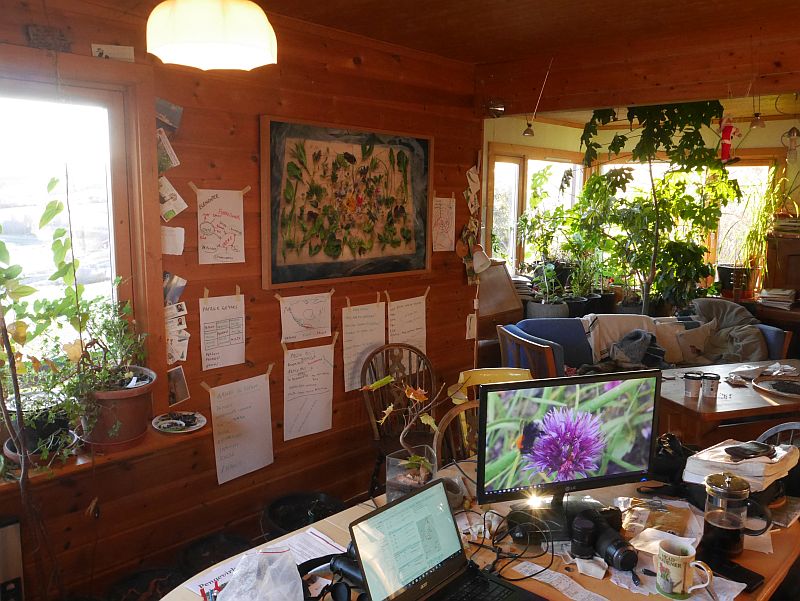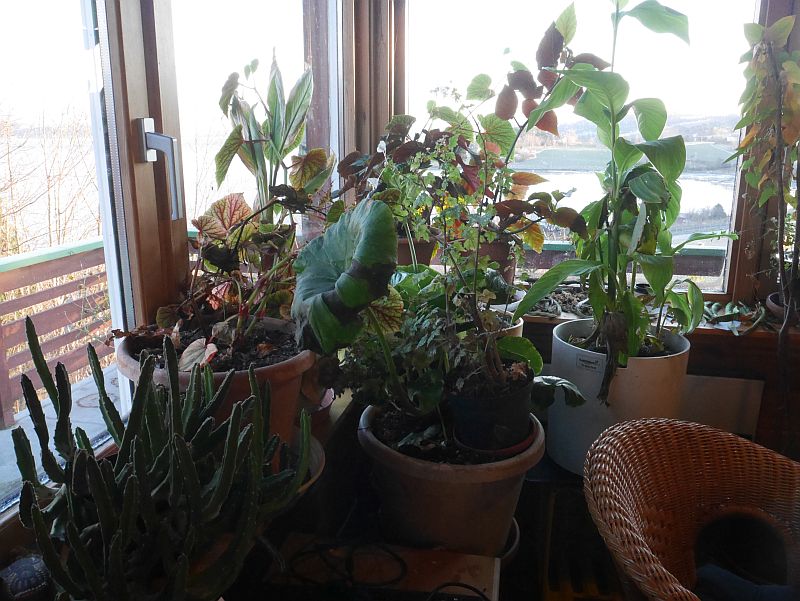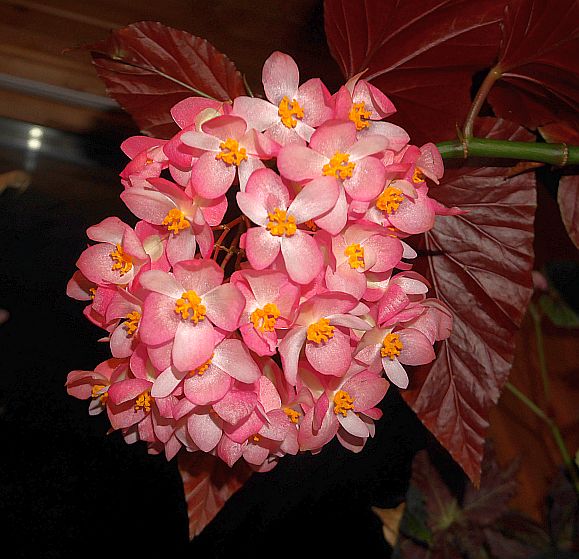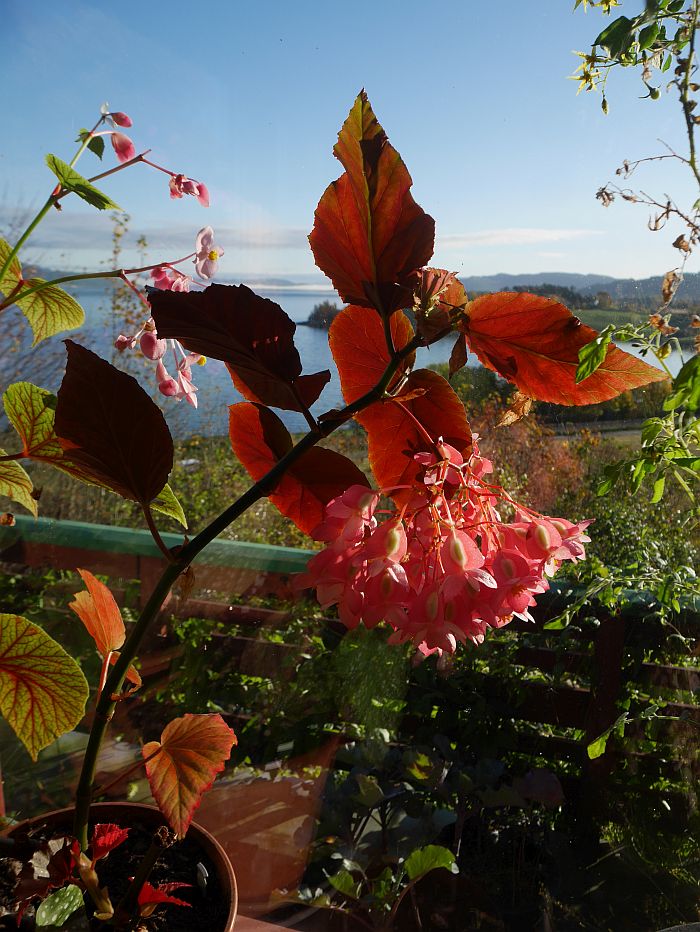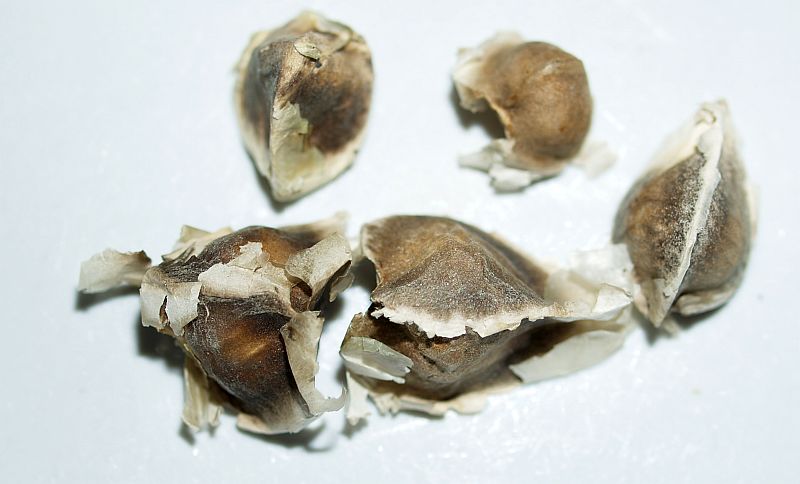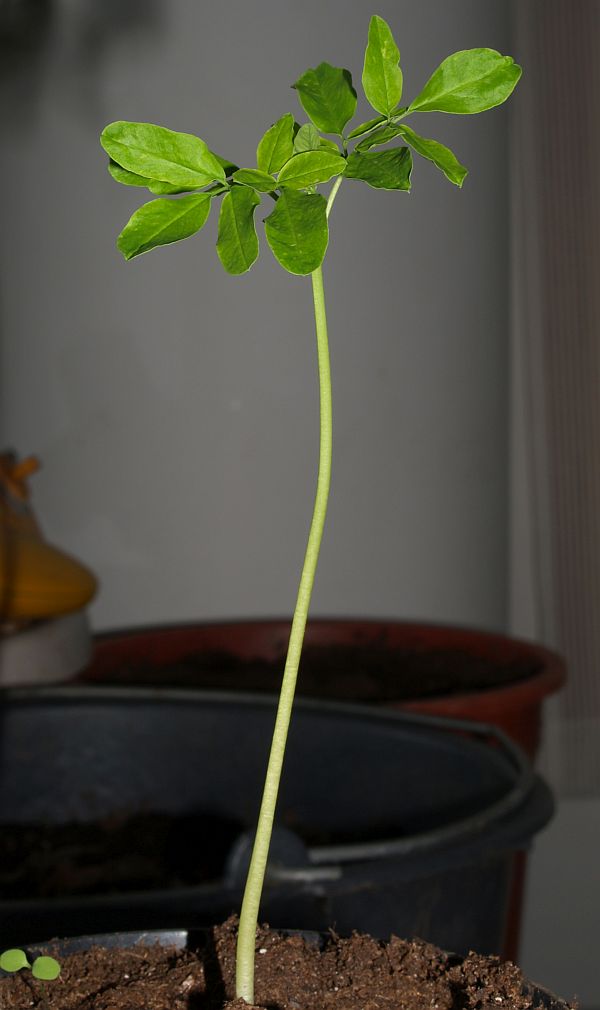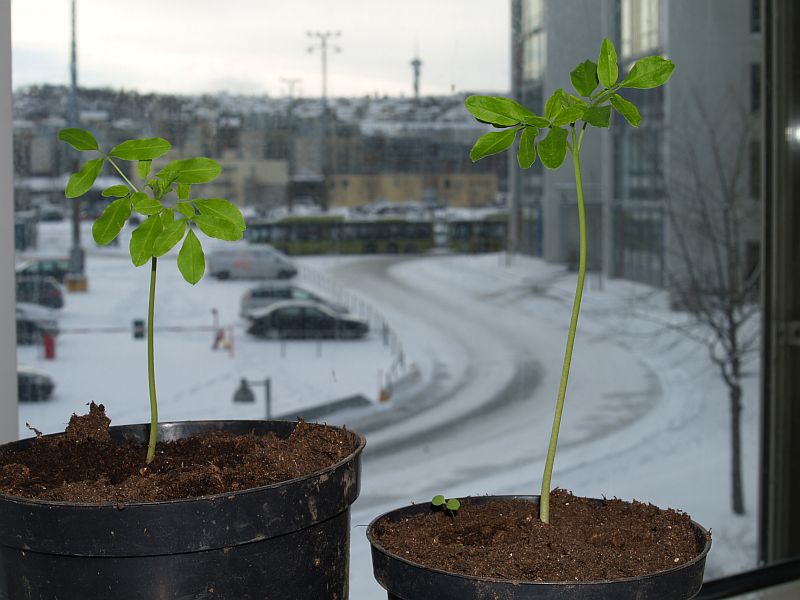The last time I blogged about this Physalis it was 7 years old. It is now 13 and still going strong. The last time I wrote about it, I wrote the following: “This Physalis which I’ve called “Indian Strain” is now going into its 7th year. I got this from Seed Savers Exchange in the US. However, that one is supposed to be a tomatillo and I wonder if I mixed it up with another I got at about the same time, P. heterophylla, clammy ground cherry, although the stems are not clammy (sticky) to the feel. That would explain it’s hardiness as it is found in the wild north to Canada (see http://plants.usda.gov/core/profile?symbol=PHHEH3). I definitely planted heterophylla in the garden and it’s survived since 2009 without winter protection, but the summer is just too cold for fruit (it does flower).
It lives in a cold bedroom all year and produces a few fruit most of the year, even continuing to ripen fruit despite the temperature being often under 10C. The fruit are sweet and have good flavour. It’s not hugely productive but little bother (aphids don’t bother it). I cut it back when it gets too straggly”.
I repotted one of them today and cut all 3 plants back to 1/3 height (it reaches the ceiling).
The conclusion is that it is a cape gooseberry / goldenberry (Physalis peruviana).
